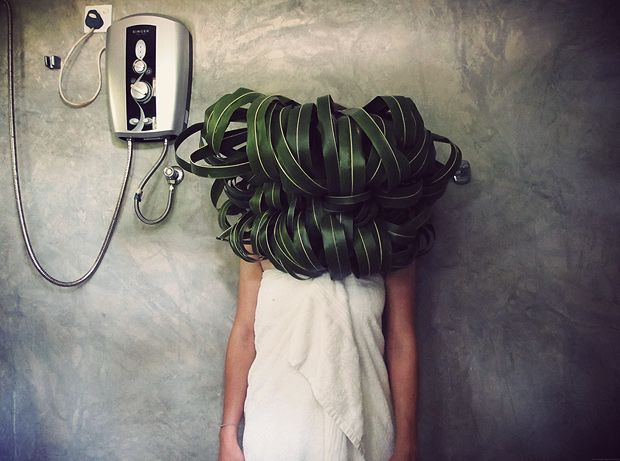Whilst political attacks on environmental science rage on, it has never seemed more important for eco-art to be made. Enter Sita Pieraccini, a Scotland-based clown and visual theatre practitioner who appeared last year at manipulate with her first solo piece, Bird. This year she returns to the festival with Make A HOO, which is inspired by her artist residency in Sri Lanka in 2013. Just as Bird explored our dual relationship with nature (where we love our surroundings, but then destroy it for our own survival), Make A HOO looks at our artificial separation from the natural world and the way that it perseveres and encroaches on our urban landscape.
The difference between the two environments is made stark by Pieraccini’s collaboration with sound artist Mark Vernon. Using pre-recorded sounds from the Sri Lankan forest, the production evokes a lush landscape teeming with life, before descending into a city frantic with mechanical sounds. It would be easy to idealise nature as a green utopia against a hellish metropolis, but Pieraccini’s physicality combined with sound distortion makes even the forest seem double-edged. It takes on a nightmarish form as a shape-shifting beast haunts the central character, reminding us that the natural world is unpredictable as well as beguiling.
Pieraccini’s physicality is strongest when she guides us through the city. She strikes a delicate balance between controlled and frantic, her body convulsing as she frantically types at the air. We see how our man-made surroundings force us into repetitive and mechanical habits, which an animalistic “hoo” cry pierces through.
This piece does require some extra reading for all of Pieraccini’s concepts to shine through. On her blog she writes that her use of Sri Lankan folk song is rooted in history, implying that when she sings she is appealing to a sense of connectedness through memory. This could perhaps have been made more evident in the performance, but Make A HOO is nonetheless a deeply affecting piece. Rich in visuals, shadow play, and emotion, Pieraccini succeeds in creating a detailed web of sensory impressions.
